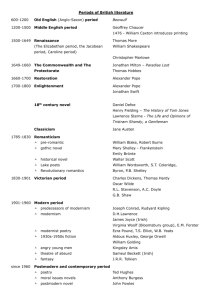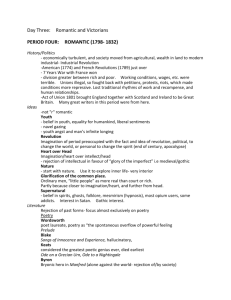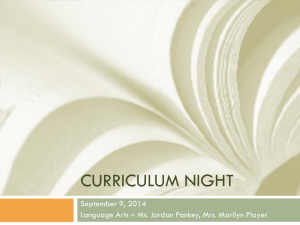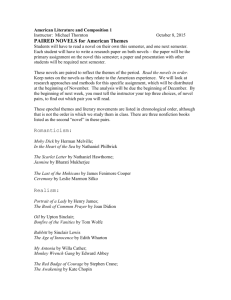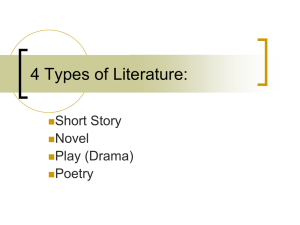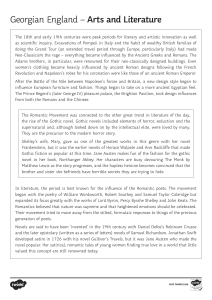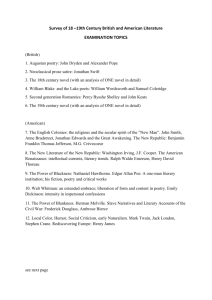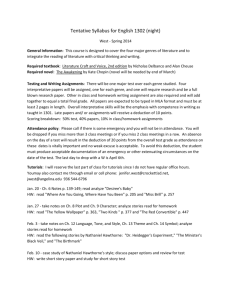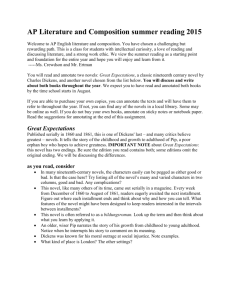AN OUTLINE OF AMERICAN LITERATURE
advertisement
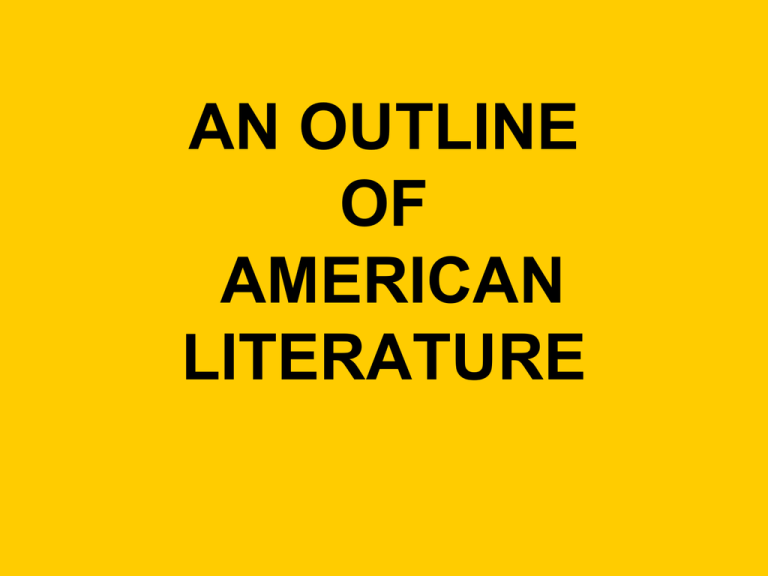
AN OUTLINE OF AMERICAN LITERATURE COLONIAL LITERATURE • pamphlets about the benefits of the colonies • journals • religious poetry • political writings (Benjamin Franklin, Thomas Paine: Common Sense ) Thomas Jefferson: United States Declaration of Independence „We hold these truths to be self-evident, that all men are created equal, that they are endowed by their Creator with certain unalienable Rights, that among these are Life, Liberty and the pursuit of Happiness.“ POST-INDEPENDENCE • first American novel William Hill Brown: The Power of Sympathy (1791) AMERICAN ROMANTICISM • Washington Irving – short stories (Rip Van Winkle) • James Fenimore Cooper – novels (The Last of the Mohicans) • Edgar Allan Poe – poetry, horror stories, detective fiction (The Raven, The Black Cat, The Murders in the Rue Morgue) • Nathaniel Hawthorne – novels (The Scarlet Letter) • Herman Melville – novels (Moby-Dick) TRANSCENDENTALISM • Ralph Waldo Emerson, Henry David Thoreau – philosophical essays • Emily Dickinson, Walt Whitman - poetry REALISM • Mark Twain: – Life on the Mississippi (1883) - memoirs – Adventures of Tom Sawyer (1876) – Adventures of Huckleberry Finn (1884) • O. Henry – short stories • Jack London: – The Call of the Wild (1903) NATURALISM • Stephen Crane: – The Red Badge of Courage (1895) – novel from the Civil War • Theodore Dreiser: – An American Tragedy (1925) LOST GENERATION • Earnest Hemingway: – The Sun Also Rises (1926) – A Farewell to Arms (1929) – For Whom the Bell Tolls (1940) – The Old Man and the Sea (1951) • Francis Scott Fitzgerald: – The Great Gatsby (1925) DEPRESSION ERA – 1930s • John Steinbeck: – Of Mice and Men (1937) – The Grapes of Wrath (1939) – East of Eden (1952) WAR / ANTI-WAR NOVEL • Norman Mailer: – The Naked and the Dead (1948) • Joseph Heller: – Catch-22 (1961) • Kurt Vonnegut Jr.: – Slaughterhouse-Five (1969) BEAT GENERATION • Allan Ginsberg: – Howl (1955) • Jack Kerouac: – On the Road (1957) • William S. Burroughs: – The Naked Lunch (1959) POSTMODERNISM • John Irving: – The World According to Garp (1978) • Truman Capote: – In Cold Blood (1966) – a non-fiction novel • William Styron: – Sophie´s Choice (1979) – a historical novel • Don DeLillo: – White Noise (1985) SOUTHERN LITERATURE • William Faulkner: – The Sound and the Fury (1929) – Southern Gothic – As I Lay Dying (1930) – modernism, stream of consciousness method • Flannery O´Connor: – A Good Man Is Hard to Find (1955) - Southern Gothic; short stories • Tennessee Williams: – Cat on a Hot Tin Roof (1955) - drama AFRO - AMERICAN LITERATURE • Langston Hughes – jazz poetry of 1920s, Harlem Renaissance • Tony Morrison: – The Bluest Eyes (1970) – Beloved (1987) • Maya Angelou: – I Know Why the Caged Bird Sings (1969) – an autobiography JEWISH AMERICAN LITERATURE • Bernard Malamud: – The Magic Barrel (1958) – a collection of short stories • Philip Roth: – Goodbye, Columbus (1959) - a novella and short stories SCIENCE-FICTION • Isaac Asimov: – I, Robot (1950) – a collection of short stories • Ray Bradbury: – The Martian Chronicles (1950) – Fahrenheit 451 (1953) AMERICAN DRAMA • Eugene O´Neil: – Mourning Becomes Electra (1931) • Arthur Miller: – Death of a Salesman (1949) • Tennessee Williams: – A Streetcar Named Desire (1947) • Edward Albee: – Who´s Afraid of Virginia Woolf (1962) CONTEMPORARY WRITERS • Stephen King: – The Green Mile (1996) • Dan Brown: – The Da Vinci Code (2003) • Cormac McCarthy: – No Country for Old Men (2005) – The Road (2006)

